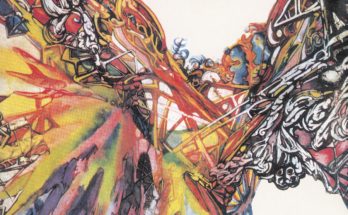By Rodrigo Díaz, José María Moreno, and Bernardo Moreno
There are times when violence is like a dark wave washing over us. We are more than 10,000 km from Kiev, yet only 300 km from San José Gracia, Michoacán, where, in February, 17 people were lined up against a wall and executed during a wake. And what about the recent bloody riot at the Corregidora stadium in Querétaro or—closer still—the beating of two women by security forces outside a bar on San Miguel’s Zacateros street just a few weekends ago?
Violence is a horrible stigma that we are forced to witness constantly. There is a reason why great minds throughout history have proposed that violence has a biological, psychological, and/or social origin. Freud’s “death drive” theorizes that the aim of all life is death and that people typically channel this death drive outwards, which is manifested as aggression towards others. Whether or not violence resides internally, driven by fear for our own mortality, is a topic that will always be worth pondering—and worthy of the following trio of artistic theories we share with you today that approach violence in very original ways.
Alejandro Paniagua Anguiano, “Tres Cruces,” 2021
Three Crosses is the story of three characters in a country where drug trafficking controls everything—where violence flourishes with impunity. Lúa, an eleven-year-old girl who plays with the dead in a clandestine grave, Estela—her grandmother—who is haunted by the ghost of alcoholism and a relentless past—and “El Ponzoña,” a hit man overwhelmed by his duties and immersed in a world where love is foreign and excruciating, are the three dramatis personae of this short and very original novel. Through agile prose, the author leads us through narrow and tortuous paths, making us wander through dark and childlike madness, revealing intimate stories hidden in the rotten hearts of the protagonists, who are hanging on by their fingernails to a reality that has lost its luster and is now uncomfortable. Secrets are revealed; stories intertwine until everything comes tumbling down like a house of cards in a violent nightmare that, for many in a country like ours, is a cruel reality that is portrayed in this devastating and dizzying book written by an author capable of talking about colorful balloons and death in the same paragraph.
Mike Hadreas (Perfume Genius), “Too Bright,” 2014
The third album from Seattle-based Mike Hadreas, who performs as Perfume Genius, shows us a new facet of his lyrical and emotional range, defying the observer (especially the macho and insecure observer) with his androgynous figure and his superb musical composition, which is both imposing and delicate. The album includes collaborations from Adrian Utley from Portishead and John Parish from PJ Harvey and projects a tender and fragile electric feel, both in the voice of Hadreas and in its dreamlike synths with their violence and rage of industrial drum-sets reminiscent of NIN. His music is provocative and determined, trusting in its own quality and revealing a personality that refuses to become the victim, who rejects being discriminated against, hated, violated by the gaze of others, wild and inconsiderate—by the loving hand that caresses with threatening daggers. These 12 songs are a declaration of war against those who—out of incomprehension, fear, or ignorance—think that they have the right to alienate or hurt you just because of your sexual orientation: “I wear my body like a rotted peach; you can have it if you handle the stink.”
Oliver Hirschbiegel, “Das Experiment,” 2001
Inspired by the Stanford University prison experiment of 1971, “Das Experiment” is a German film directed by Oliver Hirschbiegel. In the firm, researchers run a newspaper advertisement offering 4,000 marks to men of a certain age who are willing to participate in a simulated prison situation. The purpose of the research is to analyze human behavior, supposedly in a controlled setting. The psychologists choose their universe sample after conducting psychological tests on those who will play jailers and those who will play prisoners. In the experiment, prisoners lose their civil rights and are faced with arbitrary rules, all within a facility that resembles a prison. Quickly, the jailers identify with their role. The experiment was to last two weeks, but things get out of control in just a few days. Power stultifies some; fear drives the rest to madness, and the researchers, looking to maximize the results, omit the basic care measures of the participants. Power invested in certain psychological types can be the doom of humanity. The research, bending all ethical rules to its advantage, seems vile and evil. Some individuals who were only looking for a quick buck become criminals. Others end up being traumatized, mutilated, and even dead. To exercise verbal or physical violence as an authority figure seems innate to the human condition.




